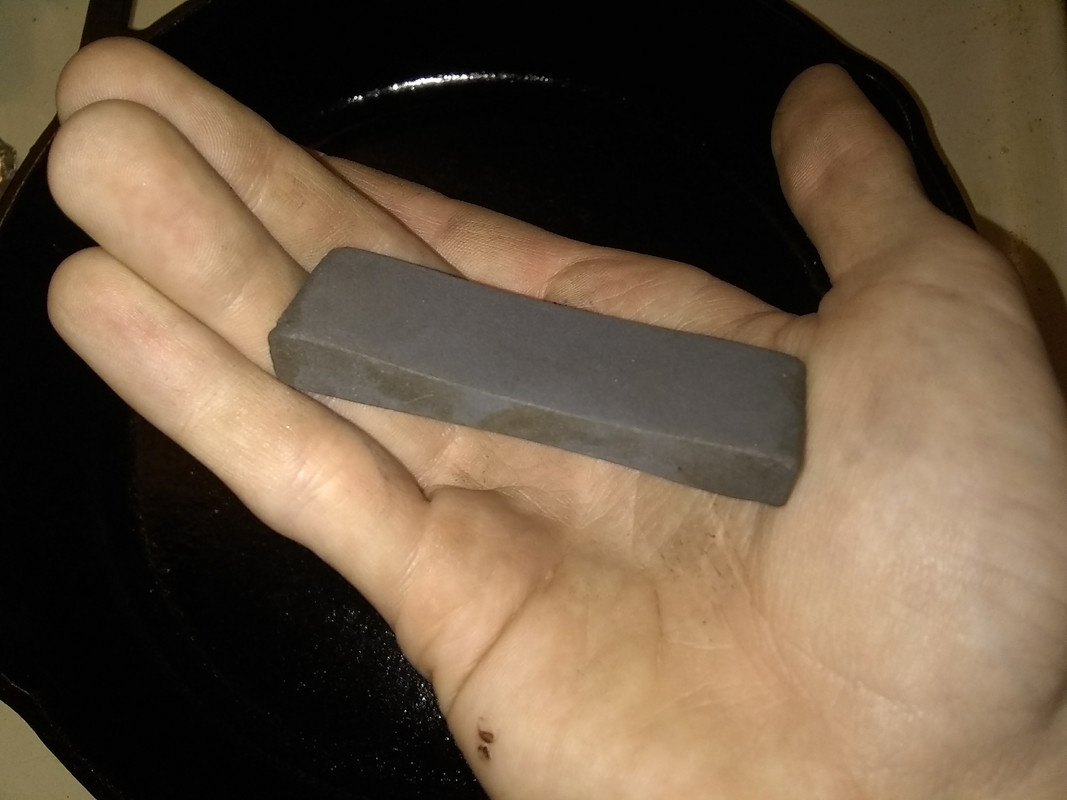eisman
Platinum Member
- Joined
- Sep 9, 2009
- Messages
- 6,999
Picked this up this past weekend. I've been looking for one that wasn't all beat to pieces. While it's slightly out of round, it's square on the axle and turns freely. It came with a handle, but that seems a bit awkward to me. Did they turn it up to speed and then grind until it slowed? I can't imagine trying to hold something true to the stone while turning the wheel.

Likewise, I'm not sure what the hook would be good for. Perhaps a small can of water? I was thinking of hanging a tray underneath to keep the stone wet when turning.

Since it's all "right and tight" I don't foresee taking the spindle out of the stone, but it is interesting how they put this together.

The other side appears to have once been able to accommodate a foot treadle, but there's no evidence of one ever having been attached to this stand. I am tempted to see if I can fashion one, most I've seen were fairly primitive.

For now a little soap, water, and oil, and it'll be just one more thing to look at. I'll have to sharpen something on it. That's what it was made for...

Likewise, I'm not sure what the hook would be good for. Perhaps a small can of water? I was thinking of hanging a tray underneath to keep the stone wet when turning.

Since it's all "right and tight" I don't foresee taking the spindle out of the stone, but it is interesting how they put this together.

The other side appears to have once been able to accommodate a foot treadle, but there's no evidence of one ever having been attached to this stand. I am tempted to see if I can fashion one, most I've seen were fairly primitive.

For now a little soap, water, and oil, and it'll be just one more thing to look at. I'll have to sharpen something on it. That's what it was made for...






